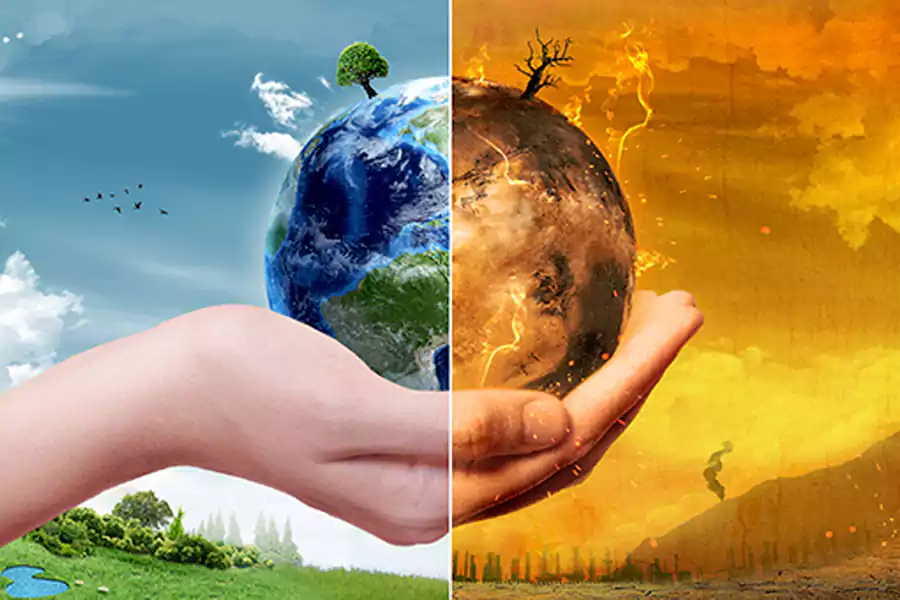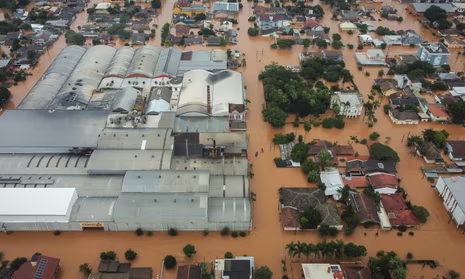The Climatic Crisis: A Global Emergency We Can’t Afford to Ignore

We live in a time of extraordinary technological progress and scientific discovery. Yet, one crisis looms larger than almost any other: the climatic crisis. From rising temperatures and melting glaciers to more intense storms and wildfires, climate change is no longer a distant threat—it’s here, and it’s accelerating.
This article explores what the climatic crisis is, how it impacts our lives and ecosystems, and most importantly, what we can do about it. Because while the problem is massive, the power to fix it is still in our hands.

1. What Is the Climatic Crisis?
The climatic crisis refers to the severe and escalating changes in global weather patterns caused by human activity—especially the emission of greenhouse gases (GHGs) like carbon dioxide (CO₂), methane (CH₄), and nitrous oxide (N₂O). These gases trap heat in the Earth’s atmosphere, causing a warming effect known as the greenhouse effect.
Over the last century, industrialization, deforestation, and fossil fuel consumption have significantly increased GHG levels. As a result, the planet is warming faster than at any point in recorded history.
2. The Evidence Is Clear and Alarming
Scientists around the world agree: the climate is changing, and humans are the primary cause. Some alarming signs include:
-
Global temperatures have risen by more than 1.1°C since the pre-industrial era.
-
Ice sheets in Greenland and Antarctica are melting at unprecedented rates.
-
Sea levels are rising, threatening coastal cities and island nations.
-
Extreme weather events—like hurricanes, heatwaves, floods, and droughts—are becoming more frequent and intense.
-
Wildlife extinction is accelerating due to habitat loss and changing ecosystems.
This isn’t speculation or fear-mongering. These are facts, supported by decades of research from organizations like NASA, NOAA, and the IPCC (Intergovernmental Panel on Climate Change).
3. How the Climate Crisis Affects Us All
The climatic crisis is not a distant, abstract issue. It affects every one of us—economically, physically, and emotionally.
a) Food and Water Security
Changes in rainfall patterns and extreme weather impact agriculture. Crops fail. Livestock suffer. Water supplies dry up or get contaminated. This leads to food shortages and higher prices.
b) Health Risks
Heatwaves can be deadly. Air pollution worsens respiratory diseases. Waterborne illnesses increase after floods. Vector-borne diseases like malaria and dengue spread faster in warmer climates.
c) Economic Damage
Storms and wildfires destroy infrastructure, displace communities, and cost billions in disaster relief and reconstruction. Developing nations suffer the most despite contributing the least to global emissions.
d) Climate Migration
As areas become uninhabitable due to rising seas or extreme heat, people are forced to move. This creates political tensions and humanitarian crises.

4. The Role of Human Activity
While natural processes do influence Earth’s climate, the current crisis is largely man-made. Major contributors include:
-
Burning fossil fuels (coal, oil, gas) for electricity, transport, and industry.
-
Deforestation, especially in the Amazon and Southeast Asia.
-
Industrial agriculture, which releases methane and nitrous oxide.
-
Overconsumption and waste, particularly in high-income countries.
Our lifestyles—what we eat, how we travel, what we buy—play a significant role in shaping the future of the planet.
5. Is It Too Late to Act? No—But Time Is Running Out
The good news is that we still have time to limit the worst impacts of the climate crisis. But we must act urgently and collectively.
The IPCC warns that we must keep global warming below 1.5°C to avoid catastrophic consequences. This requires reducing carbon emissions by at least 45% by 2030 and reaching net zero by 2050.
This is possible—but only if governments, industries, and individuals take bold steps now.
6. Solutions: What We Can Do
a) Switch to Renewable Energy
Solar, wind, and hydro power can replace fossil fuels and reduce carbon emissions. Governments must invest in green infrastructure, and individuals can choose green energy providers where available.
b) Protect and Restore Forests
Forests absorb CO₂ and support biodiversity. Reforestation and preventing illegal logging are key to stabilizing our climate.
c) Rethink Transportation
Use public transport, bike, walk, or drive electric vehicles. Aviation is one of the most polluting industries—reduce unnecessary flights when possible.
d) Change What’s on Our Plate
Animal agriculture is a major emitter of GHGs. Eating less meat and dairy—or switching to plant-based diets—can significantly reduce your carbon footprint.
e) Support Sustainable Brands
Buy less. Choose products with minimal packaging. Support companies that use eco-friendly materials and fair labor practices.
f) Get Politically Involved
Vote for leaders and policies that prioritize climate action. Support local green initiatives. Hold corporations and governments accountable.
7. Youth and Climate Activism: A Rising Force
Young people are leading the charge for climate justice. Movements like Fridays for Future, Extinction Rebellion, and Sunrise Movement have brought global attention to the crisis.
Greta Thunberg’s message is simple but powerful: “I want you to act as if the house is on fire—because it is.”
Youth are not just the future—they are the present. Their passion and urgency must inspire action across all generations.
8. The Psychological Toll of the Climate Crisis
Terms like eco-anxiety and climate grief are becoming more common, especially among younger generations. It’s hard not to feel overwhelmed when facing such a massive issue.
But turning anxiety into action is one of the most empowering responses. Join local environmental groups. Start conversations. Focus on what can be done, not just on what’s going wrong.
Remember: millions of small actions lead to big change.
